What Is The History Of Miniature Golf
What Is the History of Miniature Golf? Miniature golf, also known as mini golf or putt-putt, is a fun and family-friendly version of traditional golf. It was designed to be smaller, simpler, and more entertaining.
The history of miniature golf began in Scotland in the late 1800s, where people built small putting courses for practice. One of the earliest was the Ladies’ Putting Club of St. Andrews, made especially for women who weren’t allowed to play full-length golf at the time.
Later, in the 1950s, a company called Putt-Putt made the game even more fun by adding cool designs and obstacles.
Today, miniature golf is still loved by many. You can find glow-in-the-dark courses, pirate themes, and even indoor mini golf parks all over the world!
Today, mini golf is still growing. You can find glow-in-the-dark courses, indoor mini golf, and even games that use digital scoreboards. It’s a fun way to play, laugh, and enjoy time with others, just like it was 100 years ago!
In this article, we’ll explore the full story of miniature golf. You’ll learn how it went from a quiet putting game in Scotland to one of the most popular fun-time activities in the world.
We’ll look at its timeline, important events, cool facts, and why it continues to be loved by people of all ages.
Miniature Golf Timeline Table
| Year | Event | Location | Notes |
| 1867 | Ladies’ Putting Club of St. Andrews was founded | St. Andrews, Scotland | One of the earliest putting courses, created for women golfers |
| 1916 | “Thistle Dhu” mini golf course opens | Pinehurst, North Carolina | First standardized miniature golf course in the U.S. |
| 1926 | Rooftop mini golf courses are gaining popularity | New York City, USA | Over 150 rooftop courses by the end of the decade |
| 1930s | Mini golf saw a decline during the Great Depression | USA | Many courses closed due to economic hardship |
| 1954 | Putt-Putt Golf franchise was founded | Fayetteville, North Carolina | Focused on skill-based play and standardized holes |
| 1980s | Rise of themed and glow-in-the-dark indoor mini golf | USA, UK, and globally | Entertainment-focused, creative course design |
| 2000s | Digital scoring and AR-themed mini golf were introduced | USA, Europe, Asia | Apps, scorecards, and interactive courses modernize the experience |
| 2020s | Mini golf gains popularity through family entertainment centers (FECs) | Global | Combines mini golf with food, arcades, and party spaces |
Note: This timeline highlights key moments in the real history of miniature golf, from its 19th-century origin in Scotland to its global popularity today.
What Is the History of Miniature Golf and Its Global Spread
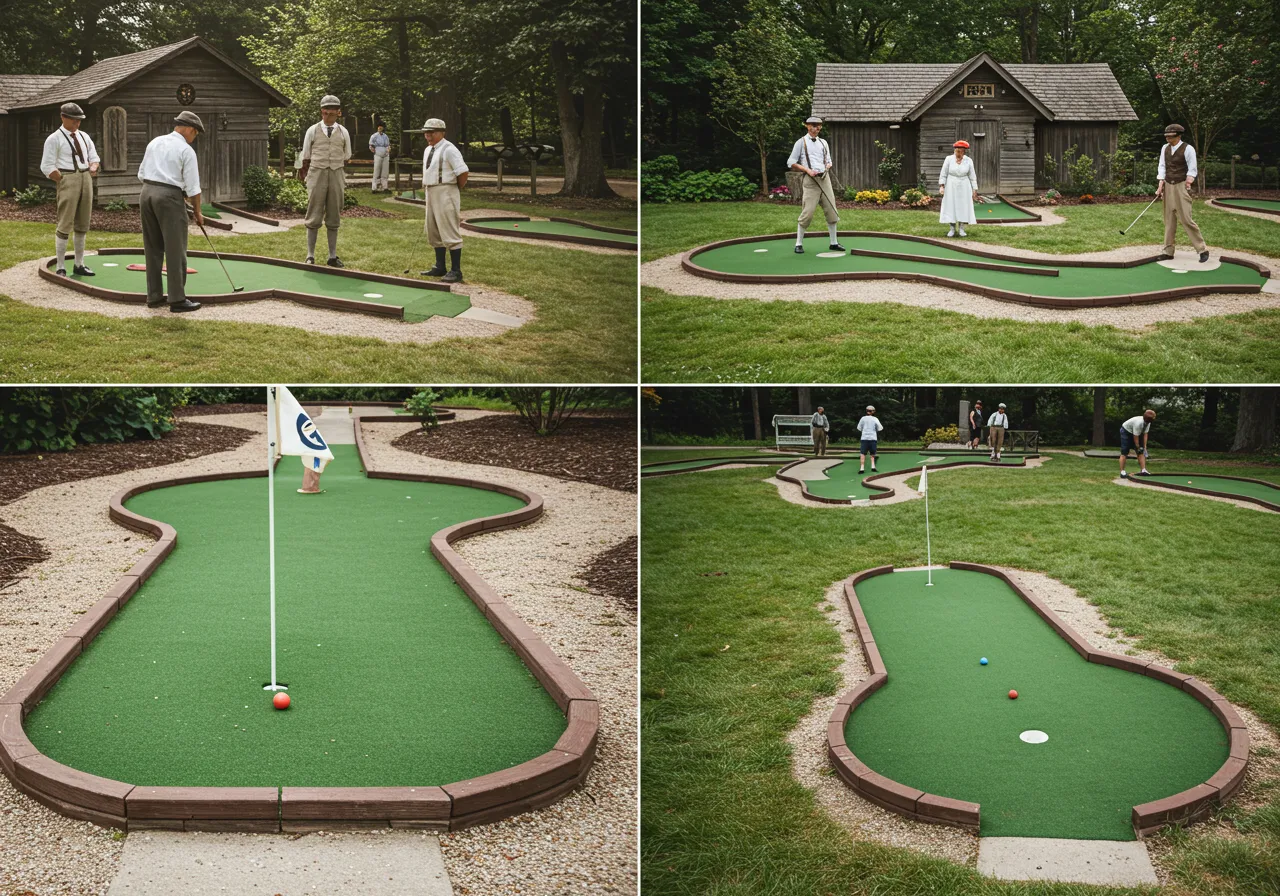
Miniature golf, also called mini golf or putt-putt, has been around for more than a hundred years. It started in Scotland in the late 1800s, where women played on small putting greens. One of the first known courses was at the Ladies’ Putting Club of St.
Andrews. In 1916, mini golf came to the United States, and during the 1920s and 1930s, it became a fun and affordable game for everyone, with exciting themes and creative obstacles.
Why Do We Still Love Mini Golf Today
People love mini golf because it’s easy to play but hard to master. You don’t need to be a strong athlete. You just need focus, patience, and a good eye. It’s fun for kids, parents, and even golf pros like me.
And today, mini golf is more exciting than ever, with indoor glow-in-the-dark courses, wild themes, and even digital scorecards.
Where Did Miniature Golf Come From? A Look at Its Scottish and American Origins
What Is the Birthplace of Miniature Golf
As a golf pro, I always tell people that miniature golf didn’t start in America; it started in Scotland.
How the Ladies’ Putting Club of St. Andrews Started the First Mini Golf Course in Scotland
In the town of St. Andrews, where regular golf was already famous, a new idea was born. In 1867, women who loved golf but weren’t allowed to play full courses started the Ladies’ Putting Club of St. Andrews.
It was one of the first places where people could just focus on putting, no long drives, no heavy clubs, and no full-size holes.
This was the beginning of miniature-style golf. It made the game easier and more welcoming, especially for people who didn’t want to play the full version.
Why Was the Ladies’ Putting Club of St. Andrews Created in 1867
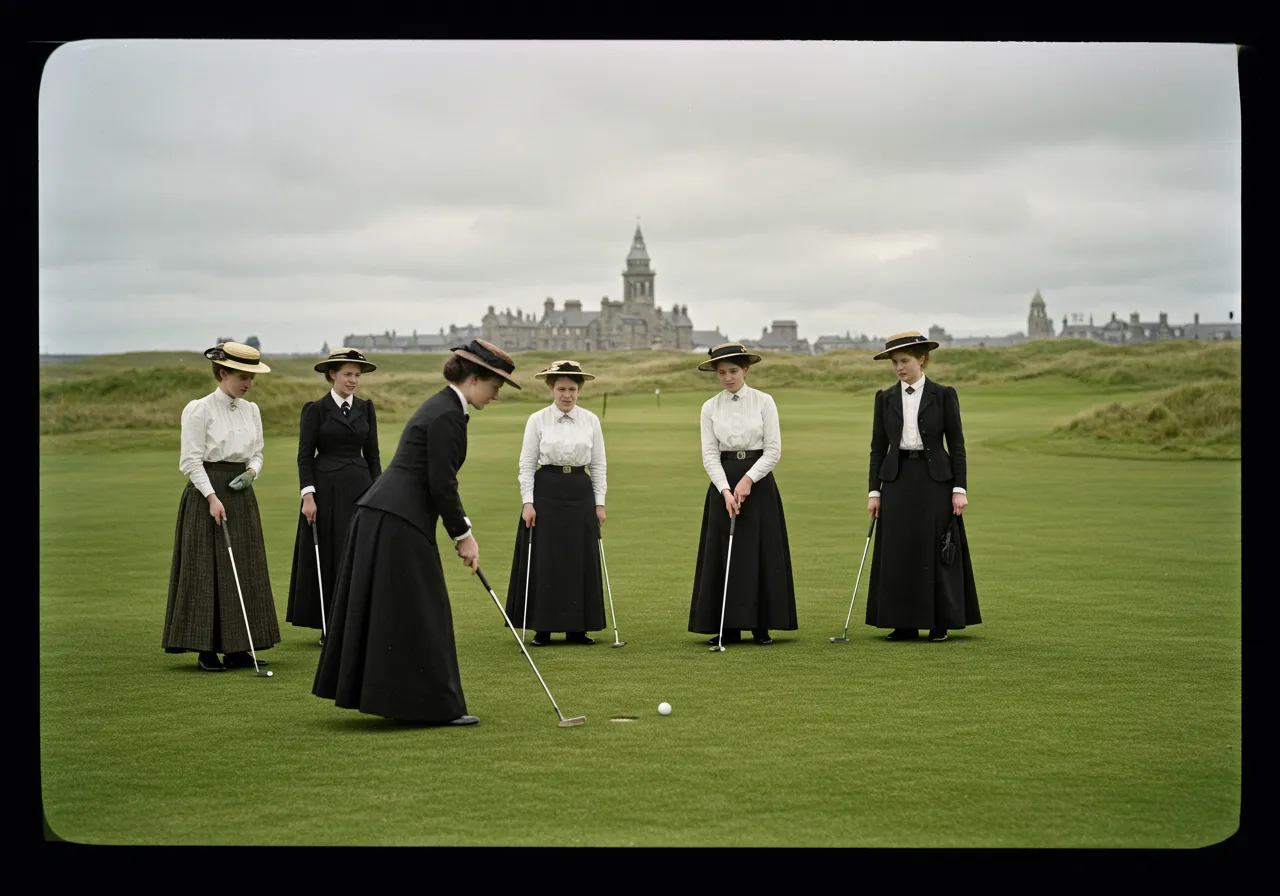
Back in the 1800s, most sports were designed for men. Women were often told they couldn’t play games like golf. But at St. Andrews, the ladies didn’t give up.
They created a small course just for practice. It had short grass, no full fairways, and let players enjoy the skill of aiming and focus, the same skills we still use in mini golf today.
That course wasn’t silly or just for fun; it was made with care. And even now, it’s seen as a big step in golf history.
What Did the First Mini Golf Course in Scotland Look Like
The course at St. Andrews looked more like a backyard green than a modern mini golf park. It didn’t have wild themes or colorful obstacles.
It was simple, a small, smooth area with short holes where players used only a putter. It was calm, relaxing, and about getting the ball into the hole with accuracy.
As a golfer, I see that early course as a way to train the mind, not just the swing.
Where Was the First Miniature Golf Course in the United States
Mini golf didn’t arrive in the United States until the early 1900s. In 1916, a man named James Barber built a small, creative putting course on his land in Pinehurst, North Carolina.
He called it “Thistle Dhu,” which sounds like “This’ll Do.” That funny name meant the course was just right, not too big, not too serious, and perfect for a good time.
Barber’s idea was new in America. It didn’t follow all the golf rules. Instead, it focused on style, relaxation, and short shots.
Who Built the First American Mini Golf Course and Why
James Barber’s Private Putting Garden That Sparked a National Trend
James Barber wasn’t trying to build a business. He just wanted a fun place to play with his friends. He built paths, obstacles, and used natural shapes to make the course feel playful but still challenging.
It wasn’t open to the public, but it inspired others to make their own mini courses. Some were on rooftops, in gardens, or in small city parks.
That little course helped start a miniature golf movement that would spread across the country in just a few years.
What Was “Thistle Dhu” and Why Is It Important in Miniature Golf History
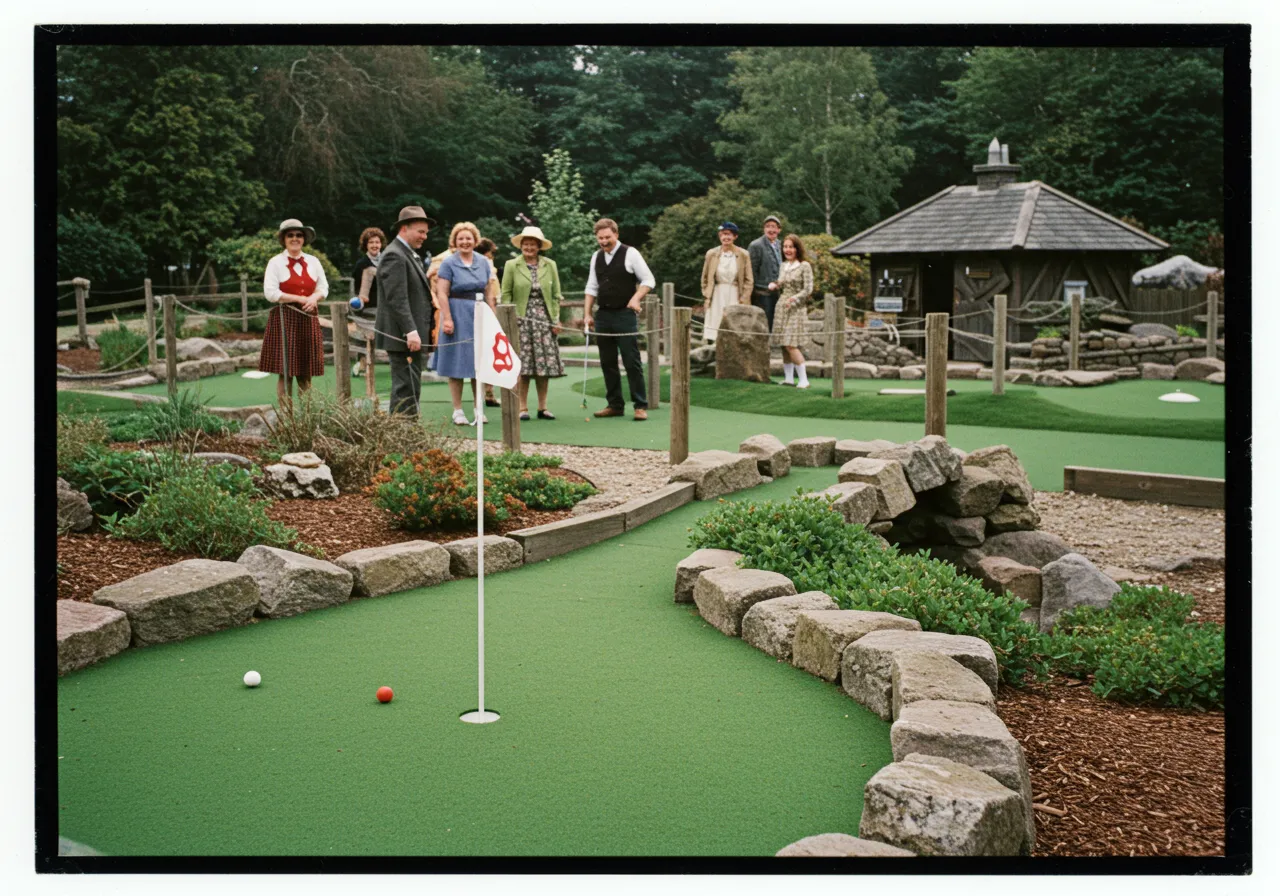
A Natural, Handcrafted Course Built for Leisure, Not Business
Thistle Dhu was more like a garden than a game park. It had curves, hills, and handmade features, all designed to test putting skills.
There were no flashing lights or silly props, just green grass and smart design. But it proved that people wanted a smaller, fun version of golf.
Today, many mini golf fans look back at Thistle Dhu as the first real step toward the mini golf we know today, a mix of skill, design, and enjoyment.
How Did Mini Golf Become a Craze in America During the 1920s
Why Was Mini Golf Invented and How Did It Start in America
As a golf pro, I’ve seen how golf brings people together. That’s exactly what Garnet Carter wanted when he built a small course near his hotel in Lookout Mountain, Georgia, back in the 1920s.
He needed a fun activity to keep guests entertained, especially those who weren’t ready for a full-size golf course.
So he built a miniature version of golf, filled with fun little paths and putting holes. That course became a hit.
He called it “Tom Thumb Golf,” and it quickly became the first commercial mini golf franchise. In 1927, Carter even got a patent for his idea.
His courses used artificial green surfaces made from cottonseed hulls and featured fun obstacles like gnomes, bridges, and tiny buildings.
What Was Special About Tom Thumb Golf and Why Is It Important
How Georgia Became the Birthplace of Franchised Miniature Golf
While Scotland gave us the first mini putting greens, Georgia gave us the first version that could be shared, sold, and built anywhere.
Garnet Carter’s patented system made it easy for other people to open their own courses. That’s why Georgia is often called the birthplace of commercial miniature golf.
As a golfer, I love how this version made the game more fun and brought it to everyone, not just the pros.
How Did Mini Golf Become So Popular During the Great Depression
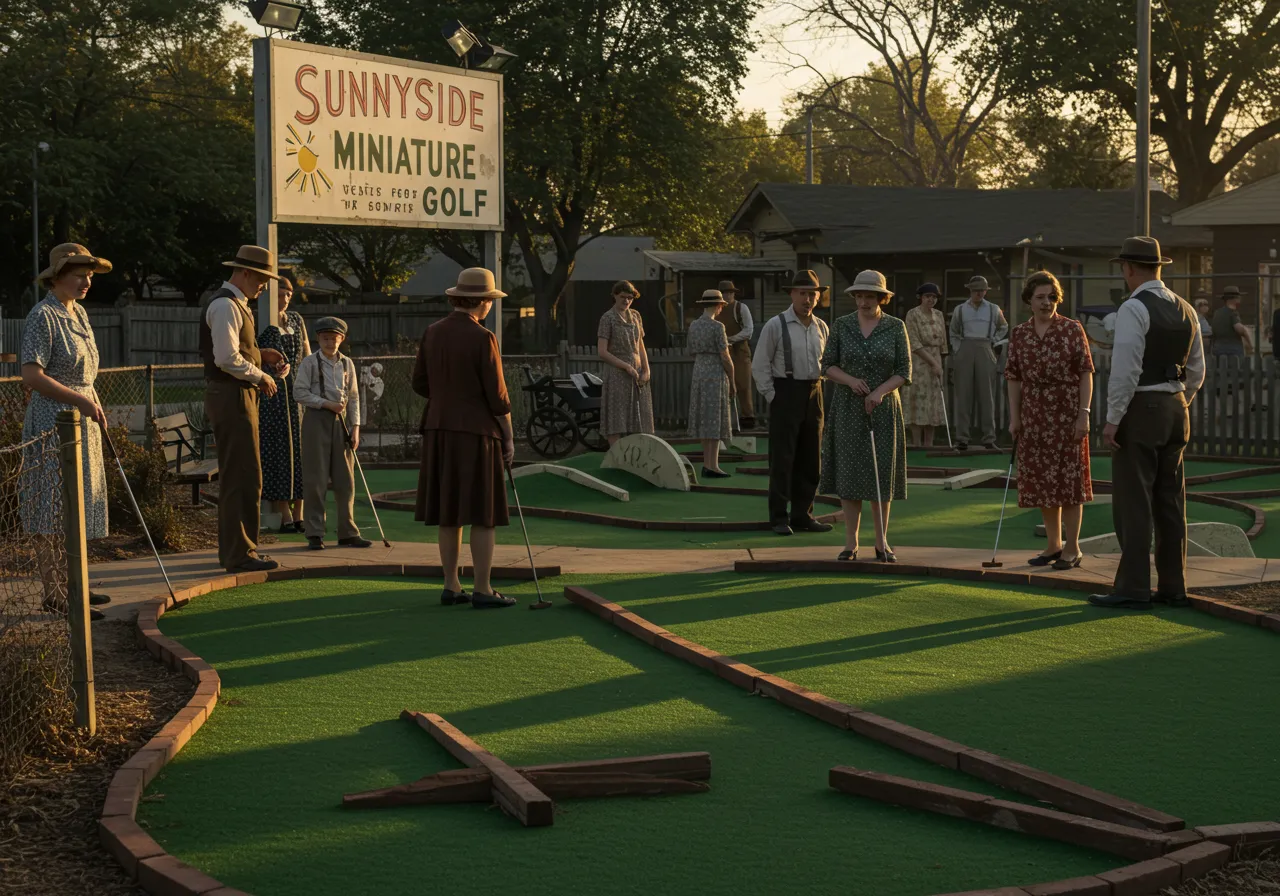
Why Mini Golf Was a Fun and Cheap Way to Escape Hard Times
In the 1930s, America faced a hard time known as the Great Depression. People didn’t have much money, but they still needed ways to relax and have fun. That’s where mini golf really shone.
Miniature golf was cheap to build and even cheaper to play. You didn’t need a lot of land or equipment, just a ball, a putter, and a course with some creativity.
Cities and small towns started building their own courses so families could have fun close to home.
What Were Rooftop Mini Golf Courses and Why Were They Popular in Cities
In big cities like New York, space was limited. So people started building mini golf courses on rooftops!
It sounds wild, but it worked. By 1930, there were more than 30,000 mini golf courses across the country, many of them on top of buildings.
Imagine playing mini golf while looking over the whole city. That’s how creative people were during that time.
As a golf pro, I think that was one of the coolest chapters in the game’s history.
Timeline Table: How Miniature Golf Became a Craze in America (1920s–1930s)
| Year | Event or Milestone | Location | Why It Matters |
| 1926 | Garnet Carter builds the first Tom Thumb course | Lookout Mountain, Georgia | Mini golf becomes a hotel attraction for guests |
| 1927 | Patent filed for Tom Thumb Golf | Georgia | First franchised miniature golf system with artificial turf and fun obstacles |
| 1929 | Tom Thumb franchises expand across the U.S. | Nationwide | Mini golf becomes accessible to everyday people |
| 1930 | Over 30,000 mini golf courses built, including on rooftops | New York and major cities | Huge boom in popularity during the Great Depression |
| 1930s | Rooftop mini golf becomes a trend | Urban areas | Creative use of space in crowded cities |
| 1935 | Popularity declines due to oversaturation and a hanging economy | Nationwide | Many courses close, but the love for mini golf remains |
Note: This table shows how miniature golf in America grew quickly from a hotel idea to a nationwide entertainment craze, especially during hard times like the Great Depression.
How Have Mini Golf Courses Changed Over Time? A Timeline from Grass to Windmills

What Is the Timeline History of Mini Golf Course Design
As a pro golfer, I’ve seen how both big and small golf courses have changed.
But miniature golf courses have one of the most fun transformations in sports history. Let’s take a look at how they evolved over time:
A Timeline of Mini Golf Course Design Changes
1916–1920s: Natural Garden Courses for the Wealthy
Mini golf first started in private homes and clubs. The courses looked like small versions of real golf greens, with real grass, flowers, and natural hills.
These were quiet, beautiful spots, but only rich people could play in them.
Late 1920s–1930s: The Tom Thumb Mini Golf Era
When Garnet Carter invented Tom Thumb Golf, things changed. Courses started using artificial grass, and they added fun shapes and easy obstacles.
These were cheaper to build and fun for everyone, not just the rich.
1950s: The Rise of Putt-Putt and Post-War Mini Golf
In 1954, Don Clayton launched the Putt-Putt brand, which focused on skill over luck. The courses had simple blocks, rails, and clean lines, with every hole made to finish in exactly 2 strokes.
These courses were made for competitive play, and players could practice their real putting skills.
1960s to Now: Themed Mini Golf Becomes Entertainment
By the 1960s, mini golf started to feel like an adventure game.
Courses began to include windmills, pirate ships, waterfalls, castles, caves, and even talking animals or robots (called animatronics). These days, mini golf is all about fun, lights, sounds, and creative designs.
Are Mini Golf and Putt-Putt the Same Thing
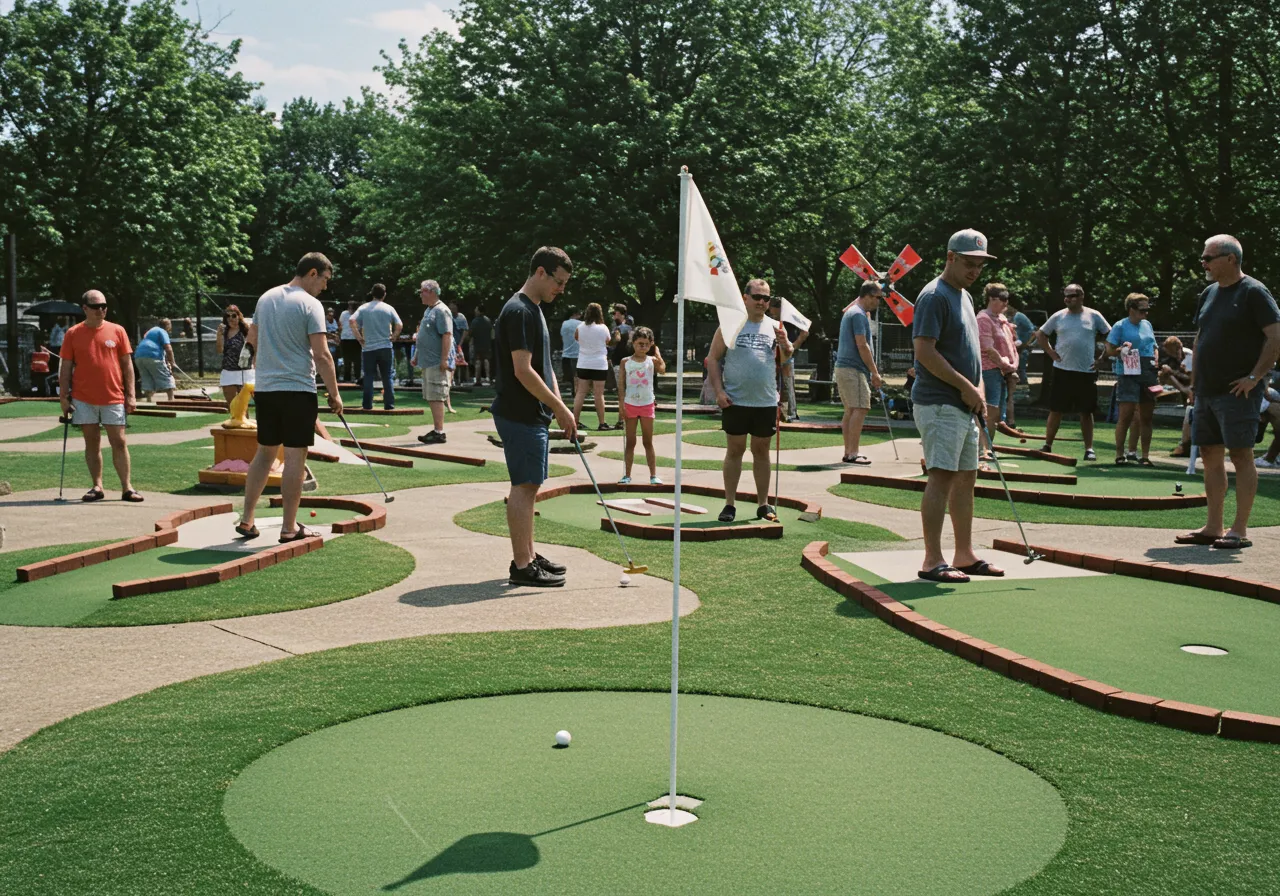
What Makes Mini Golf a Fun and Random Game for Everyone
Mini golf is the general name for all small putting games. You might see a course with a windmill, a moving bridge, or a dinosaur.
It’s not always about skill; sometimes, the ball bounces just right and lands in the hole by luck. Mini golf is made for fun, not scores.
I’ve played with kids, parents, and even grandparents on mini golf courses. Everyone laughs, and you never know who’s going to win.
What Is Putt-Putt Golf and How Is It Different from Regular Mini Golf
A Competitive Version of Mini Golf That Tests Your Putting Accuracy
Putt-Putt is not just another name; it’s a real brand. The courses are all the same shape and design, made to help players work on their precision and timing. There are no moving parts or wild decorations. Just simple angles, blocks, and rails.
Each hole is made for 2 strokes max, and it’s perfect for people who want to compete and improve their putting.
As a golf pro, I actually use Putt-Putt-style courses to sharpen my short game before real matches.
Table: How Mini Golf Course Designs Changed Over Time
| Time Period | Course Style & Features | Key Innovation or Shift | Who/Where |
| 1916–1920s | Natural-style greens with real grass and gentle slopes | Private garden courses for the wealthy | Pinehurst, NC (Thistle Dhu), elite clubs |
| Late 1920s–1930s | Artificial turf, basic curves, bridges, and novelty decorations | First mass-market courses using artificial greens | Garnet Carter’s Tom Thumb Golf, Georgia |
| 1950s | Geometric layouts, skill-based holes, and no random obstacles | The Putt-Putt franchise focuses on competition and consistency | Don Clayton, Fayetteville, North Carolina |
| 1960s–Present | Elaborate themes: windmills, castles, animals, glow-in-the-dark | Mini golf becomes full family entertainment with visual appeal | Worldwide, indoor and outdoor entertainment |
Note: This table shows how mini golf course design evolved from quiet garden-style putting greens to theme park-like adventures.
Is Miniature Golf Still Popular Today: Exploring Why It Remains a Family Favorite
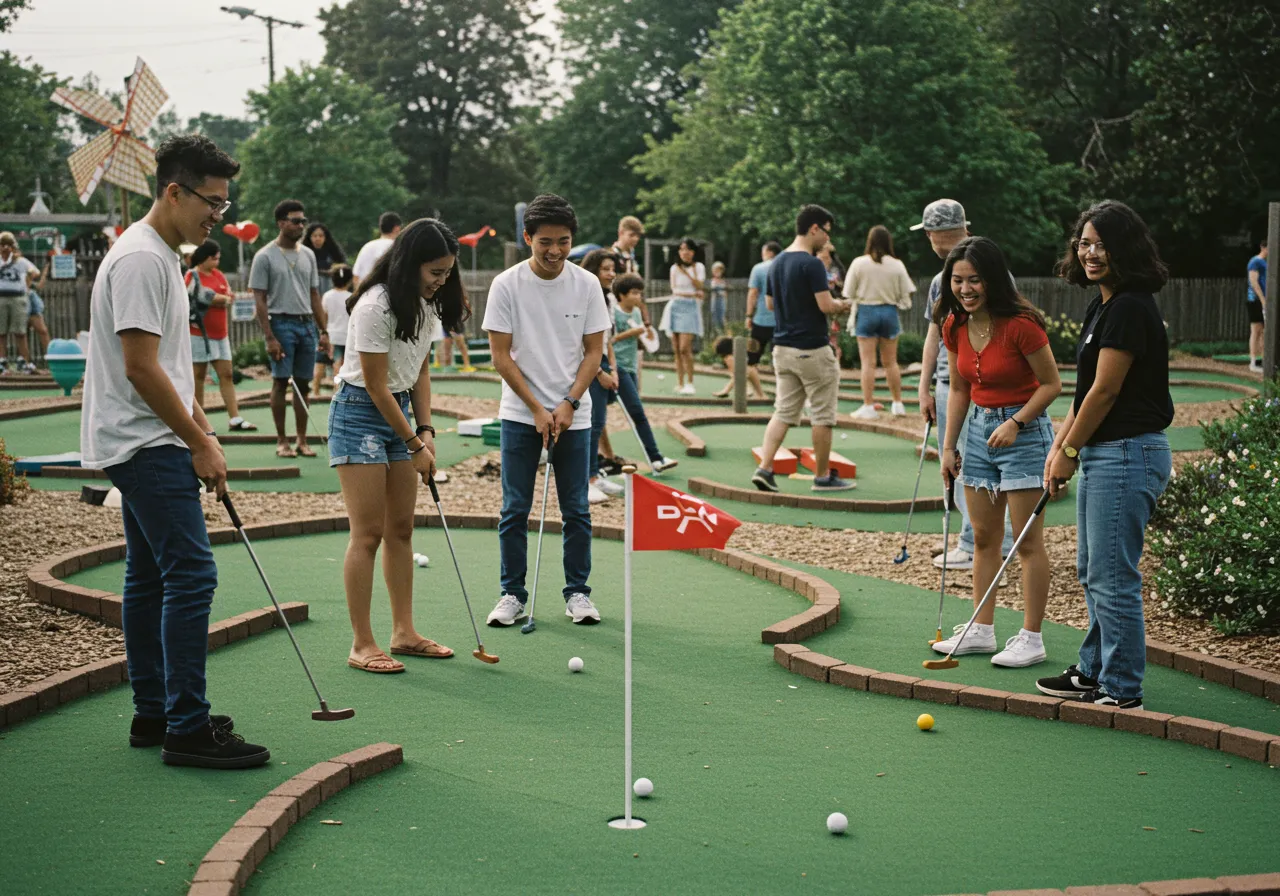
Why Do People Still Love Playing Mini Golf in the Modern World
Mini Golf as a Family-Friendly Game, Date Night Idea, and Nostalgic Activity
Even after playing professional golf for years, I still love visiting a mini golf course with friends or family. Why? Because it never gets old.
Mini golf today is more popular than ever. It’s the kind of game where kids, parents, and even grandparents can all play together.
It’s perfect for a birthday party, a family weekend, or even a first date. The game brings out laughs, a little friendly competition, and memories that stick.
And guess what? It’s not just an outdoor summer game anymore. There are indoor mini golf centers now, with blacklight courses that glow in the dark!
You can play all year, rain or shine. I’ve played in a neon jungle, a glow-in-the-dark space theme, and even a course inside a shopping mall.
How Does Modern Mini Golf Stay Fun and Fresh
Indoor, Glow-in-the-Dark, and High-Tech Mini Golf Courses
Today’s courses are all about creative designs. You might see pirate ships, volcanoes, laser lights, or even talking dinosaurs.
Some places even let you keep score on your phone or play along with music.
All this keeps miniature golf exciting for the new generation, while still feeling familiar to those of us who grew up playing it.
What Is the Physics Behind Mini Golf
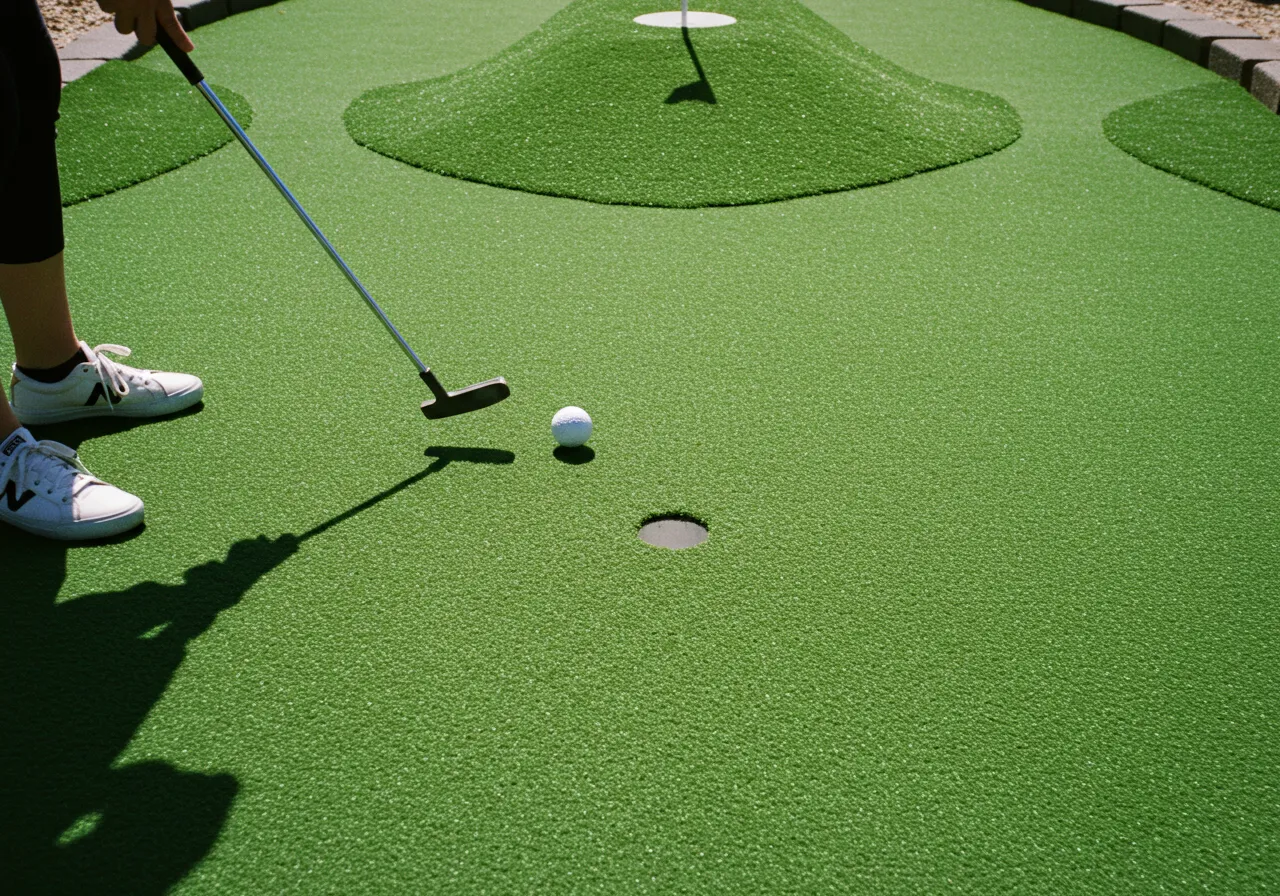
Understanding How Friction, Angles, and Force Make the Ball Move
Now here’s a little science, even in a game like mini golf. To get better at the game, you don’t just need luck, you need to think like a golfe and a little like a scientist.
- Friction: The green turf slows down your ball. That’s why hitting too softly might not get the ball to the hole.
- Angles: When you bounce the ball off a wall, the angle it hits will affect where it goes. That’s called the angle of reflection, just like a mirror.
- Kinetic Energy: The harder you swing, the more energy your ball has. That energy helps it move, or miss!
When I practice putting, I think about these things every time. Whether it’s a real course or a glowing mini golf hole, it’s still about aim, control, and smart thinking.
FAQs
Who invented miniature golf and why?
Garnet Carter invented Tom Thumb Golf in the 1920s to entertain guests at his hotel in Lookout Mountain, Georgia. His idea used small putting greens and fun obstacles, making the game more playful and open to everyone.
Where did miniature golf start?
Miniature golf began in Scotland in 1867 with the Ladies’ Putting Club of St. Andrews. It was built to let women practice putting since they weren’t allowed on full golf courses at that time.
Is Georgia the birthplace of miniature golf?
Georgia is the birthplace of commercial miniature golf. While Scotland had the first mini golf course, Garnet Carter’s Tom Thumb franchise in Georgia made mini golf popular and available to everyone.
Are mini golf and Putt-Putt the same thing?
Not exactly. Mini golf includes all kinds of courses with themes, luck-based obstacles, and fun designs. Putt-Putt is a specific brand that uses simple, skill-based courses with no moving parts and always par 2 holes.
Why did miniature golf become popular in the 1930s?
During the Great Depression, mini golf became a low-cost way for families to have fun. Thousands of courses were built, even on city rooftops, because it was cheap to build and easy to play.
Conclusion
Miniature golf has come a long way since its quiet beginnings in Scotland. What started as a simple putting practice course for women in the 1800s became a global game filled with fun themes, creative designs, and family memories.
In America, it grew fast, thanks to Garnet Carter’s Tom Thumb courses and the rise of Putt-Putt in the 1950s.
Today, whether you’re playing next to a pirate ship, inside a blacklight jungle, or at a quiet outdoor course, you’re part of a tradition that’s over 100 years old.
Mini golf is more than just a game. It’s a mix of skill, laughter, and history, perfect for all ages.
Mini Golf History 1900s to Present Day
Posts References:
The History Of Mini Golf – Rainbow Skateland
The surprisingly subversive history of mini golf – National Geographic